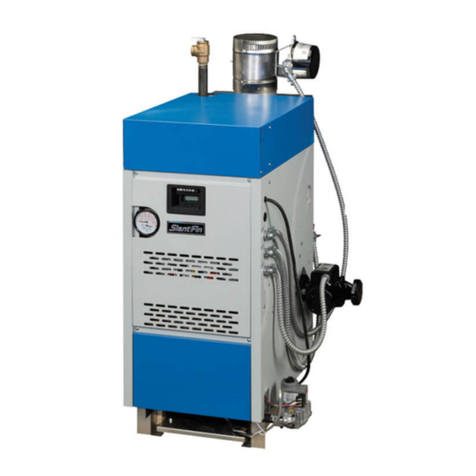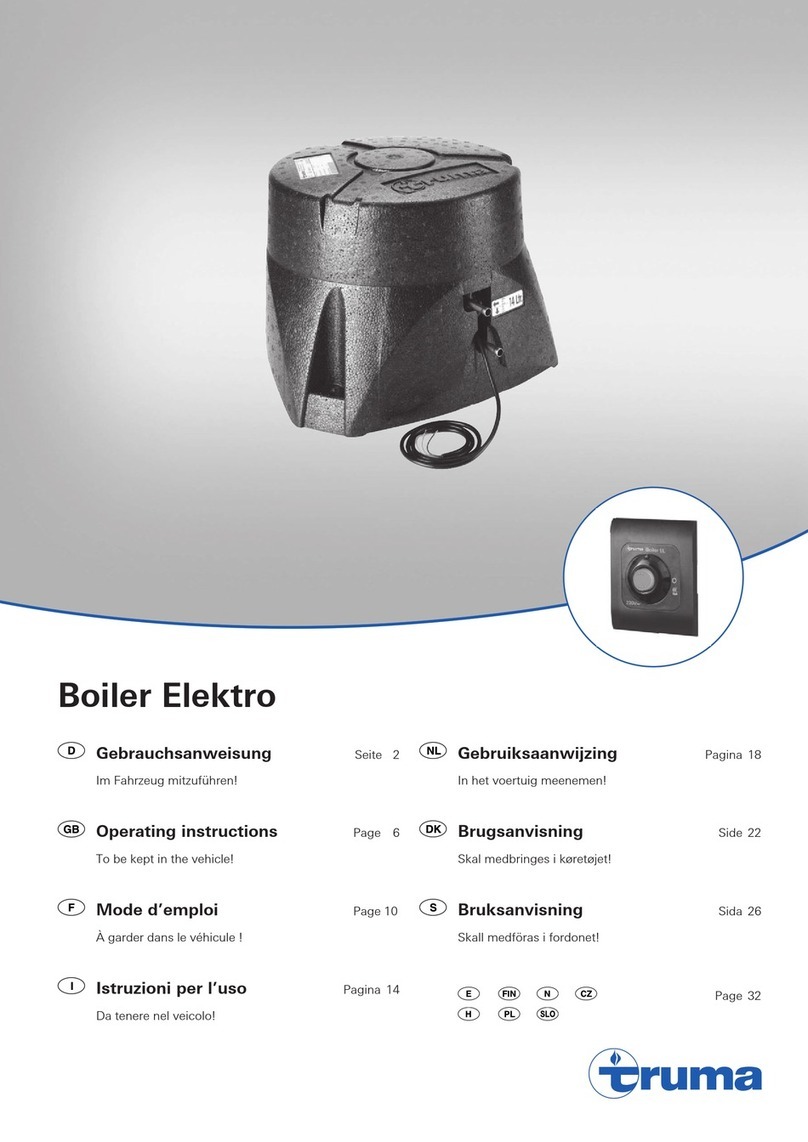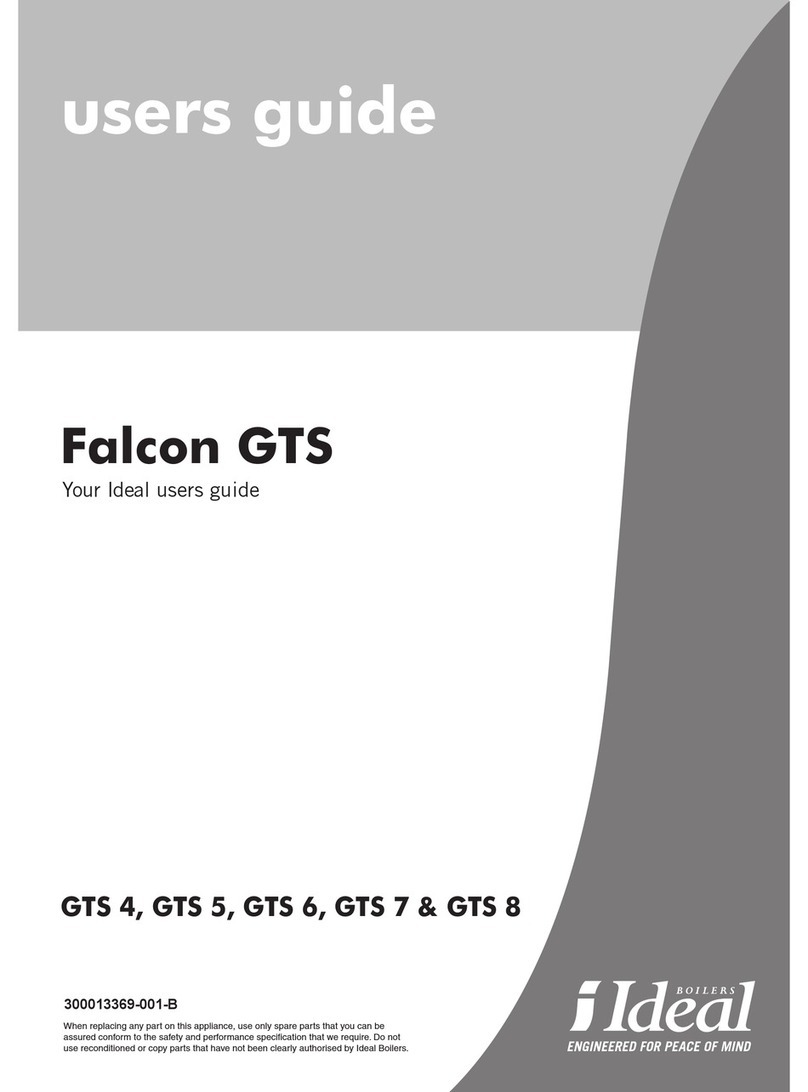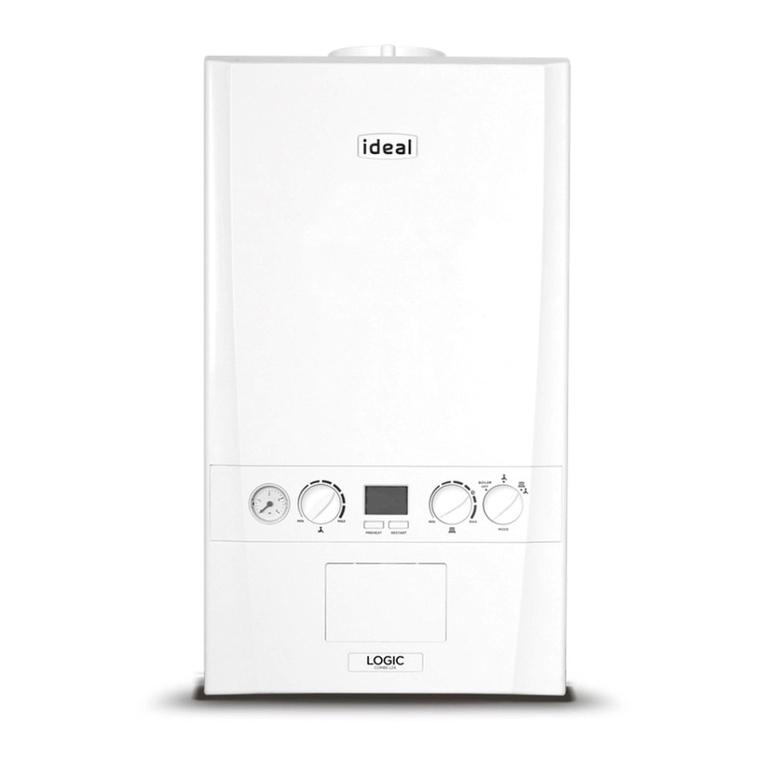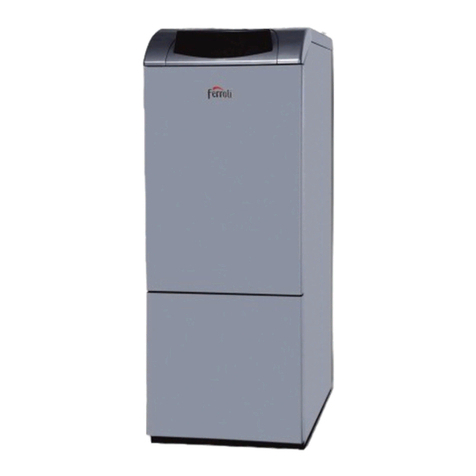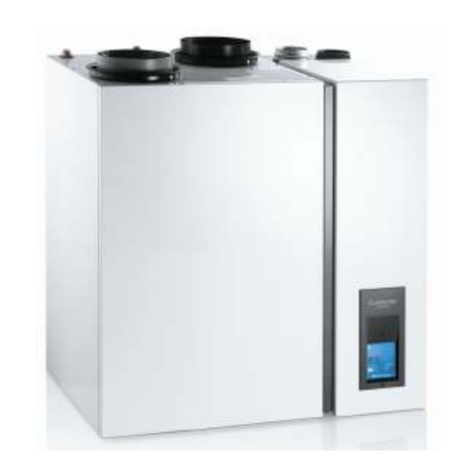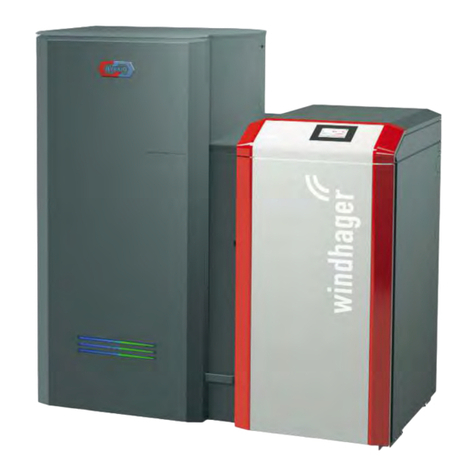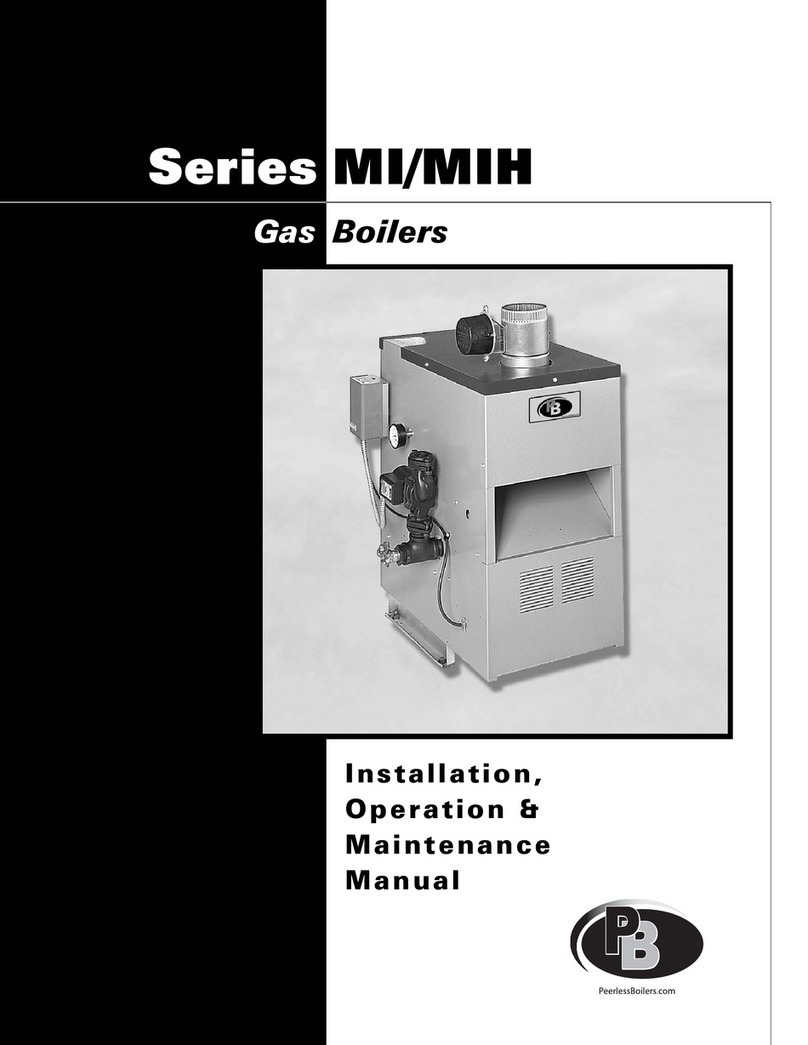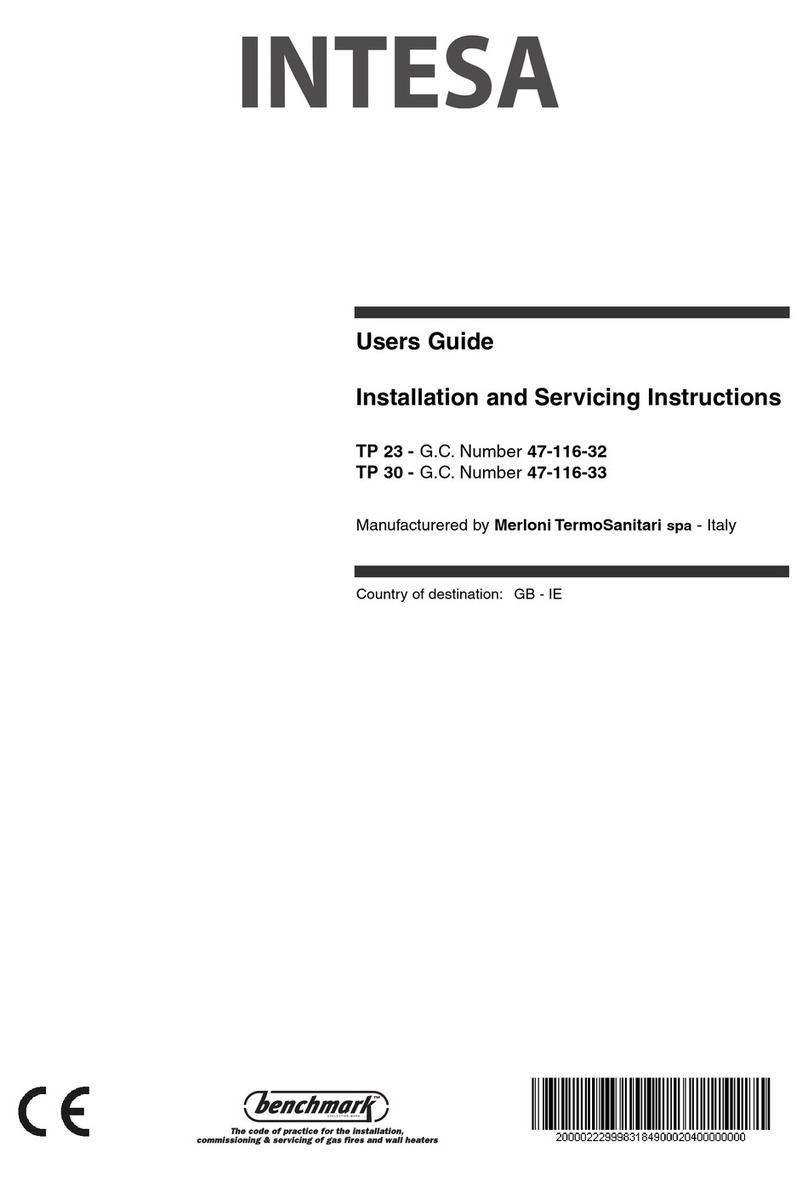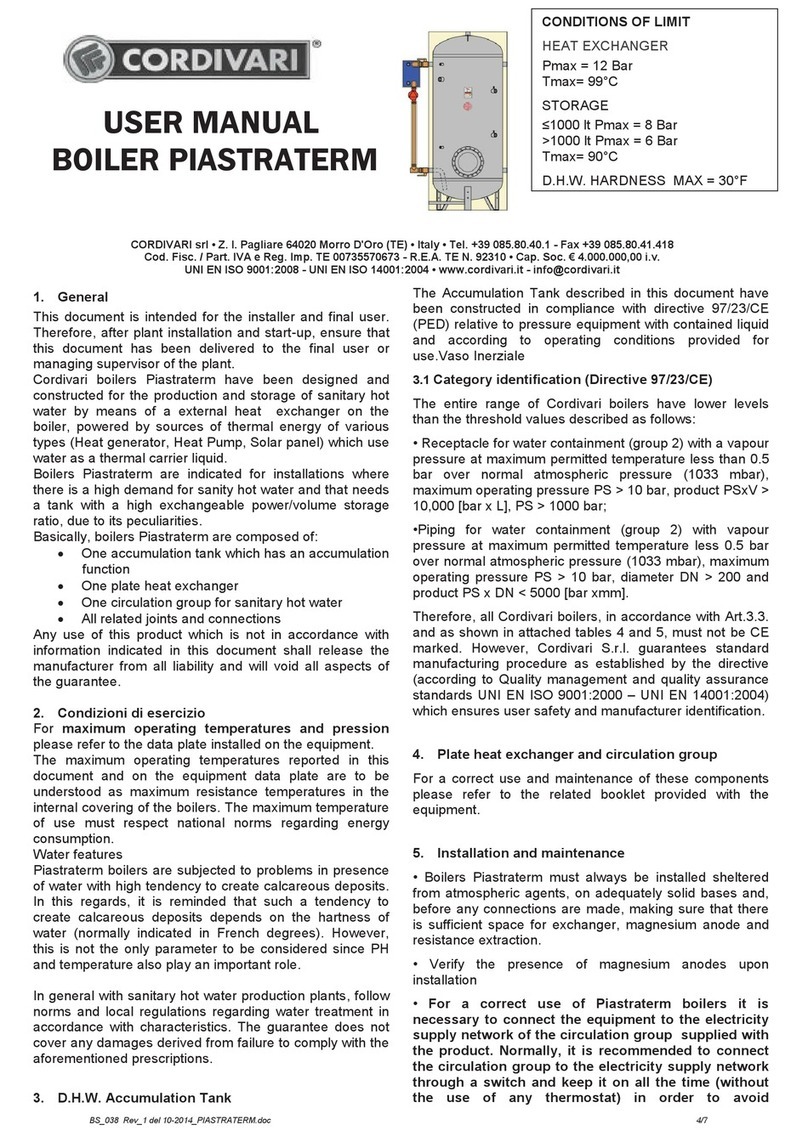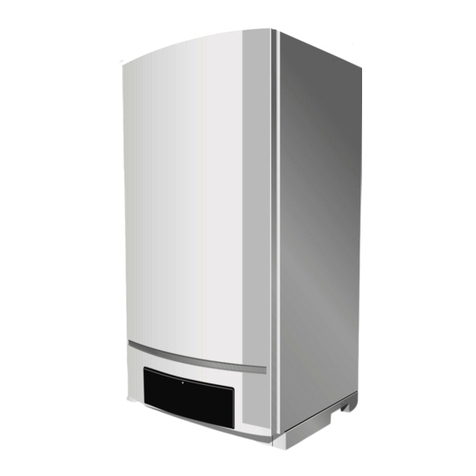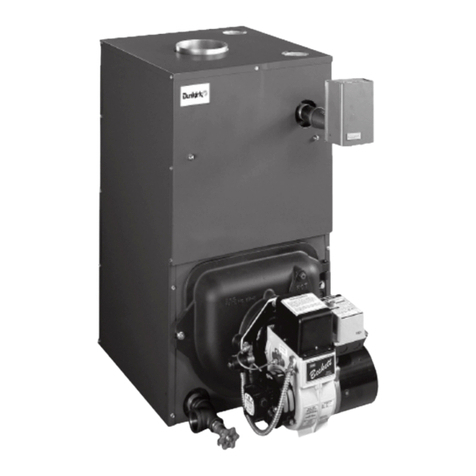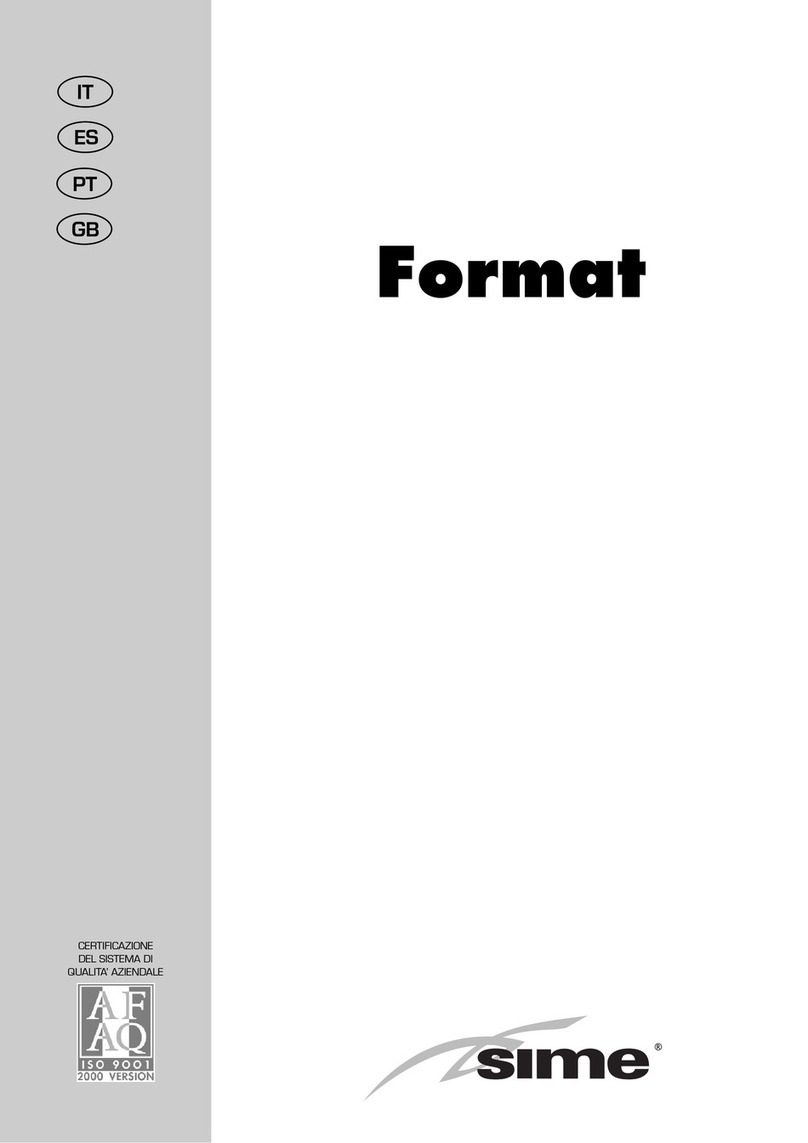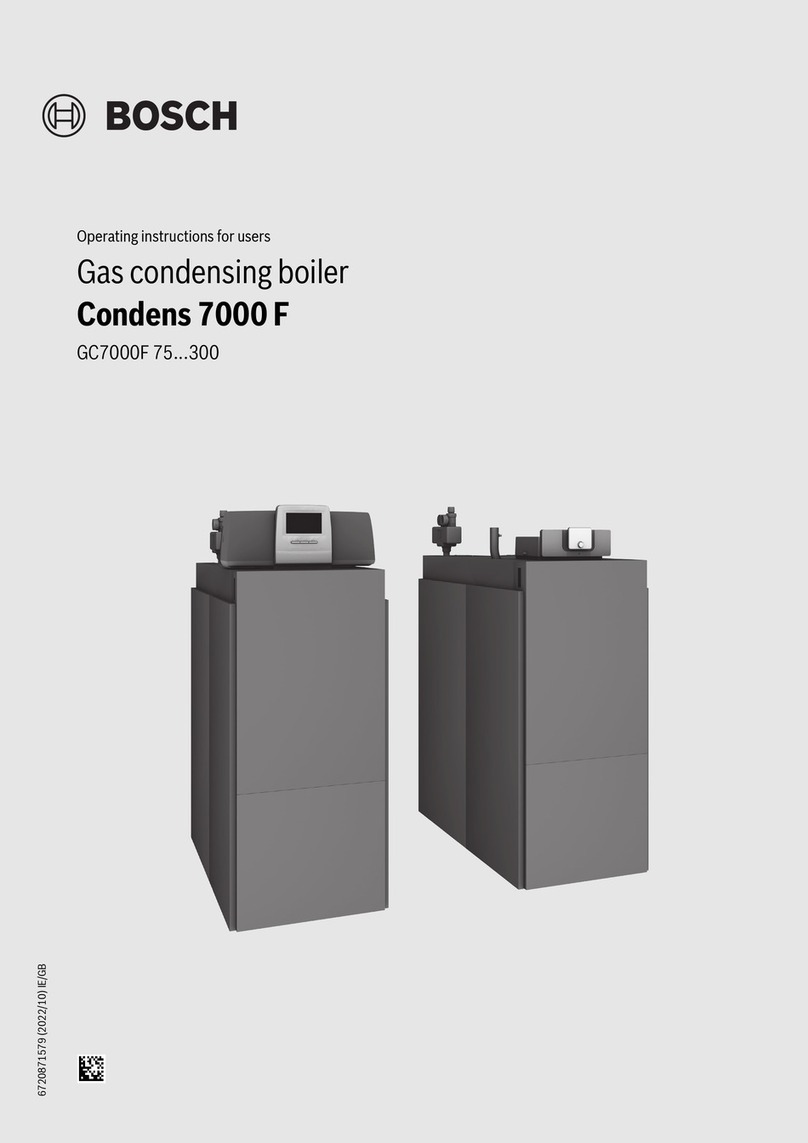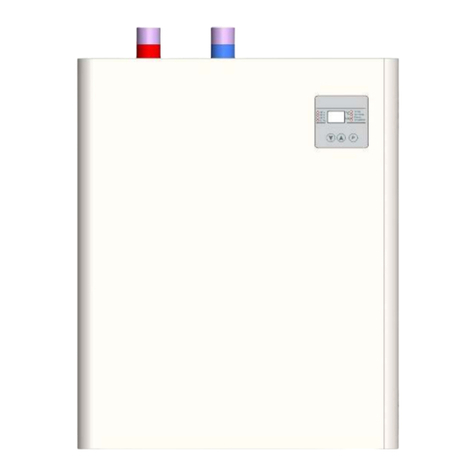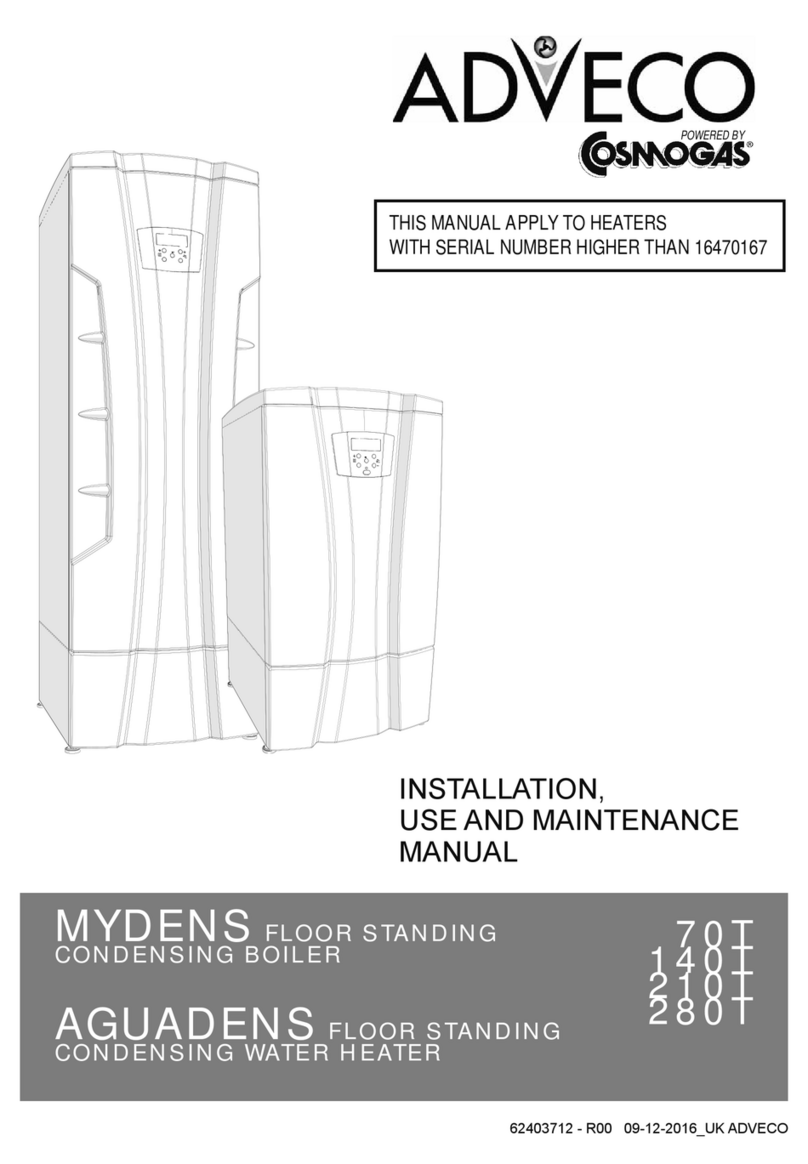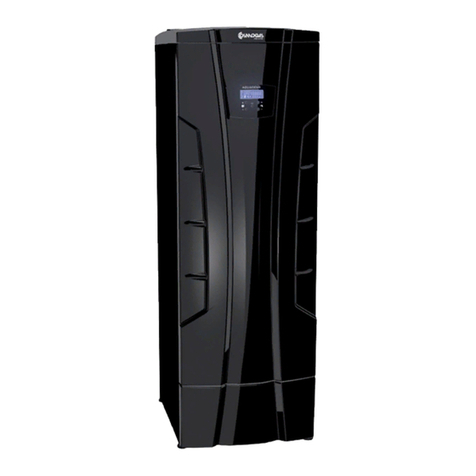
2. Device information
These instructions contain important information about safe
and professional assembly, commissioning and maintenance
of the boiler.
These instructions are for installers who have knowledge for
work with heating installations due to their professionalism and
experience.
2.1 Overview of types
This manual applies to the following types:
2.1.1 Declaration of conformity
We declare that the devices are tested in accordance with the
directives 2014/35/EU (Low Voltage Directive, LVD) and
2014/30/EU (Electromagnetic Compatibility Directive, EMC).
2.1.2 Proper use
The boiler can only be used for heating hot water and indirectly for
preparation of hot water. To ensure proper use, one must follow the
operating instructions, the data on the factory tile and the technical
data.
2.2 Instructions for installation
Use only original spare parts of the manufacturer or
spare parts approved by the manufacturer. There shall
not be any responsibility for damages caused by spare
parts which have not been delivered by the
manufacturer
When installing the heat system please abide to the following:
Valid regulations in construction industry
Regulations and norms on safety-technical equipment of
heating installations
Changes on the place of mounting according to valid
regulations
2.3 Operating instructions
When working with heating installation follow next instructions:
Boiler should work in working range up to max temperature
of 90°C and min pressure of 0.4 bars to max pressure of 3
bars, which should be controlled on regular basis
Boiler should be operated only by adults with technical
knowledge and qualifications to work with heating systems
and which are acquainted with the instructions and operation
of the boiler
Do not close safety valve
Inflammatory objects must not be put on the boiler surface
or close to it (within safety distance)
Boiler surface clean only with non-inflammatory products
Inflammatory substances do not keep in the room for boiler
installation (e.g. petroleum, oil, etc.)
No lids should be opened during the operation
Keep a safe distance according to the applicable local
regulations
2.4 Freezing protection agents and
inhibitors
It is not allowed to use protective products against frost neither
inhibitors. Id it is not possible to avoid anti-frost protection then
should use anti-frost products allowed for heating installations.
Anti-frost products:
Reduce lifetime of the boiler and its parts
Reduce heat transmission
2.5 Norms, regulations and standards
The product is in compliance with the following norms and
regulations:
BS EN 50110-1:2013; EN 50110-1:2013 –Operation of electrical
installations - Part 1: General requirements
BS EN 55014-1:2017; EN 55014-2:2015; EN 55014-1:2017; EN
55014-2:2015 –Electromagnetic compatibility - Requirements for
household appliances, electric tools and similar apparatus - Part 1:
Emission - Part 2: Immunity - Product family standard
BS EN 60335-1:2012; EN 60335-1:2016 Household and similar
electrical appliances - Safety - Part 1: General requirements
BS EN 61000-3-2:2019; EN 61000-3-2:2019 Electromagnetic
compatibility (EMC) - Part 3-2: Limits - Limits for harmonic current
emissions
BS EN 61000-3-3:2013/A1:2019; EN 61000-3-3:2014/A1:2020
Electromagnetic compatibility (EMC) - Part 3-3: Limits - Limitation
of voltage changes, voltage fluctuations and flicker in public low-
voltage supply systems
2.6 Tools, materials and auxiliary
components
Boiler installation and maintenance requires standard tools
used in the area of installation of heating systems, plumbing
and electrical installations.
2.7 Minimum spacing and flammability of
construction materials
Depending on valid regulations, other minimum distances
could be applied, different than mentioned below.
Comply with regulations of electrical installations and
minimum distances which are in force in the subject
country
Minimum distance for heavy inflammable and self-
extinguishing materials is 200 mm
Inflammability of components
Asbestos, stone, wall tiles, baked
clay, plaster (with no organic
additives)
With smaller
quantity of
added
elements
(organic
components)
Plaster cardboards plates, base
felt, glass fibres, plates of
ACUMIN, ISOMIN, RAIOT,
LOGNOS, VELOX, AND
HERACLITUS
Beech, oak, veneered wood, felt,
HOBREX, VERSALIT and
UMAKARTplates
Pine, larch and spruce, veneered
wood
Asphalt, cardboard, cellulose
materials, tar-paper, plywood
plates, cork plates, polyurethane,
polystyrene, polyethylene, floor
fibre materials
Adveco Standard
Electric Boilers
Table 1: Ignitable materials and composition of
elements according to DIN 410






















